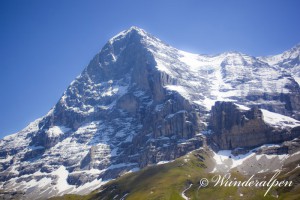
`Only once before have I seen them from afar in waking life, but I know them and their names, for under them lies Khazad-dûm, the Dwarrowdelf, that is now called the Black Pit, Moria in the Elvish tongue. Yonder stands Barazinbar, the Redhorn, cruel Caradhras; and beyond him are Silvertine and Cloudyhead: Celebdil the White, and Fanuidhol the Grey, that we call Zirak-zigil and Bundushathûr.
Gimli, The Lord of the Rings.
This lovely feature guides us through the alpine regions of Switzerland that proved so inspirational to Tolkien when he travelled there in 1911.
[J.R.R. Tolkien] created the legendary landscapes of Middle Earth and interwove motifs of the Celtic and of the Northern European mythology to his world-famous novel “The Lord of the Rings”. Taking a closer look at Tolkien’s biography and the geography of Middle Earth, we, maybe unsuspectedly but inevitably, encounter the Alps, more precisely the four-thousand-metre peaks of the Berner Oberland (Bernese Oberland).
It was those mountains, on his journey through Switzerland in 1911, which inspired Tolkien to create some of the fantastic locations in the novel:
First, he and his 11 companions travelled from Interlaken to the Lauterbrunnen Valley, a U-shaped glacial valley, with breath-taking steep faces. Tolkien was so deeply impressed by Lauterbrunnen, that decades later he modeled Rivendell, meaning “deeply cloven valley”, after it. In her essay “The Lyfe and the Auncestrye” Marie Barnfield points out that even the name of the river flowing through Rivendell is a reminiscent of Lauterbrunnen (possible meaning: “lauter”-loud, and “Brunnen”-well, fountain, spring): Loudwater.
Their journey continued up to Wengen and down again to Grindelwald, passing the Kleine Scheidegg (a mountain pass), always beneath the mighty, glacial mountain range of Eiger, Mönch (“monk”) and Jungfrau (“maiden/virgin”). The panorama is absolutely breath-taking even for people who have travelled the whole world. Tolkien, who was only 19 years old when he saw – and experienced – the high mountains for the first time, must have been simply overwhelmed by the sight of those four-thousanders.
No wonder that the Eiger, the Mönch and the Jungfrau occur in his great novel. That is they are mirrored in the mountain range, and more precisely the three peaks, of the Misty Mountains, which are part of the Dwarven realm Khazad-dûm: Caradhras (Redhorn), Celebdil (Silvertine) and Fanuidhol (Cloudyhead).


